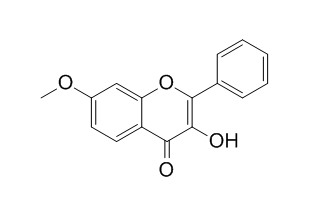7-Methoxyflavonol
Reference standards.
Inquire / Order:
manager@chemfaces.com
Technical Inquiries:
service@chemfaces.com
Tel:
+86-27-84237783
Fax:
+86-27-84254680
Address:
1 Building, No. 83, CheCheng Rd., Wuhan Economic and Technological Development Zone, Wuhan, Hubei 430056, PRC
Providing storage is as stated on the product vial and the vial is kept tightly sealed, the product can be stored for up to
24 months(2-8C).
Wherever possible, you should prepare and use solutions on the same day. However, if you need to make up stock solutions in advance, we recommend that you store the solution as aliquots in tightly sealed vials at -20C. Generally, these will be useable for up to two weeks. Before use, and prior to opening the vial we recommend that you allow your product to equilibrate to room temperature for at least 1 hour.
Need more advice on solubility, usage and handling? Please email to: service@chemfaces.com
The packaging of the product may have turned upside down during transportation, resulting in the natural compounds adhering to the neck or cap of the vial. take the vial out of its packaging and gently shake to let the compounds fall to the bottom of the vial. for liquid products, centrifuge at 200-500 RPM to gather the liquid at the bottom of the vial. try to avoid loss or contamination during handling.
Toxicol In Vitro.2024, 99:105876.
Nat Chem Biol.2018, 14(8):760-763
Nutrients.2020, 12(5):1242.
Journal of Mushroom2024, 22(4):192-198
Int J Mol Sci.2024, 25(18):9909.
Advances in Traditional Medicine 2021, 21:779-789.
J Herbmed Pharmacol.2018, 7(4):280-286
Vietnam Journal of Science2022, 64(2), 69-75.
Front Cell Dev Biol.2020, 8:32.
Molecules.2020, 25(21):5091.
Related and Featured Products
Journal of Mass Spectrometry,1972, 6(2):199-210.
The electron‐impact promoted fragmentation of aurone epoxides.[Reference:
WebLink]
METHODS AND RESULTS:
The mass spectra of six aurone epoxides have been rationalized with the aid of high resolution mass spectrometry and metastable ion evidence. These compounds fragment in a well defined manner and mechanisms are proposed for the formation of their characteristic ions. Some similarity was observed between the mass spectra of 6‐methoxyaurone epoxide (II), 4‐hydroxy‐7‐methoxy‐3‐phenylcoumarin (VII) and 7-Methoxyflavonol (IX).
The possibility that VII and IX are intermediates in the fragmentation of epoxide II is discussed.
CONCLUSIONS:
Thermal rearrangement of aurone epoxide II was shown to yield the corresponding flavonol IX and coumarin VII.



